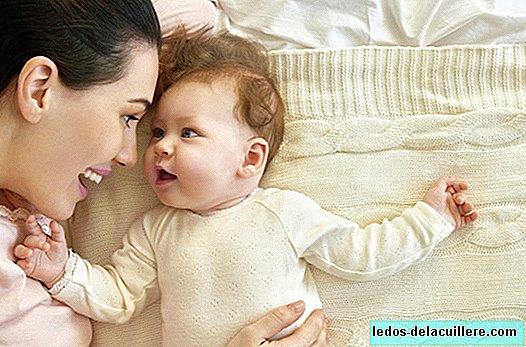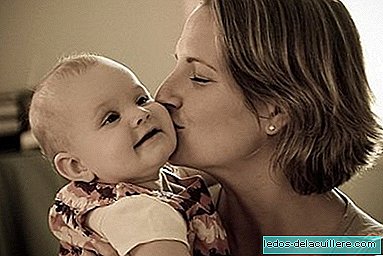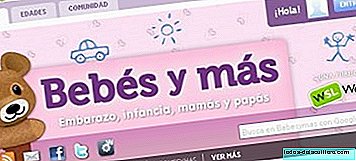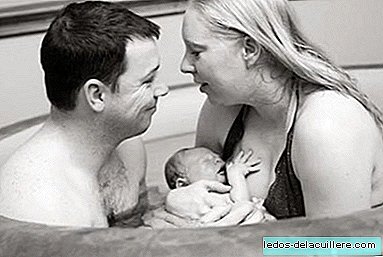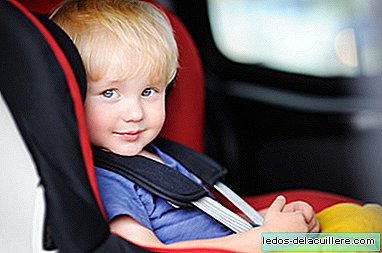
There are currently two regulations governing child restraint systems (SRI): ECE R44 / 04 regulations (in force since 1982) and ECE R129 or i-Size regulations (which began to be implemented in phases in 2013).
The differences between one regulation and another are substantial, but it is important to know and familiarize ourselves with the classification of the i-Size chairs, because the tendency is that these SRIs are gradually replacing those approved under the R44 regulation, until a future (there is still no fixed date) the old regulations disappear, and with it their chairs.
Classification of i-Size chairs
Most of us are accustomed to the group classification system that governs the old R44 regulations. These groups (0/0 + / I / II / III) classify the chairs according to the child's weight. But there will come a time when this classification ceases to exist.
With the i-Size regulation, SRIs are classified by height, a measure that, according to experts, is more intuitive and less likely to be error, since it would prevent children from changing groups too soon as is the case with classification by weight.Another advantage of this height classification is that it will be easier for parents to buy a chair, since we must look at the size of our son, just like we do when we buy a childrens clothing item.
We will have to change chairs when the child's head reaches the upper edge of the SRI, but it is more likely that these types of chairs will last longer than those classified by weight.
Below we show you the visible badge that i-Size chairs have to wear. As you can see on the label, the manufacturer must indicate for what height range his chair is valid, in addition to the weight and other data related to the approval and serial number.
 The i-Size chairs must have a badge like this, where the height range for which it is approved is clearly indicated.
The i-Size chairs must have a badge like this, where the height range for which it is approved is clearly indicated. As we can see in this RACE chair comparator, each manufacturer can approve their i-Size chairs for the height range they determine, so we can meet several groups. But if we compare it with the classification by weight of the R44 regulations, we could talk about three large groups:
Car seats i-Size 40-75 cm
 Chair model approved under the i-Size standard for this group. It has an isofix anchor and support leg and must be installed in reverse.
Chair model approved under the i-Size standard for this group. It has an isofix anchor and support leg and must be installed in reverse. These chairs could match those currently known as groups 0. They are used from the birth of the baby until he reaches 75 cm in height, which in age could correspond approximately to 12 months.
These chairs must always be installed against the rear, using Isofix system in combination with a third anchor point, although as we read on the website of the road safety expert Matías Massó, they could also be used only with the seat belt if the manufacturer indicates so, in which case the guides must be correctly visible.
Car seats i-Size 40 to 105 cm
 Chair model approved under the i-Size standard for this group. It has an isofix anchor and support leg. This specific model must always be installed in reverse
Chair model approved under the i-Size standard for this group. It has an isofix anchor and support leg. This specific model must always be installed in reverse This group of SRI could match those currently known as group 0 + / I. They are used from birth until the child reaches 18 kilos, which in age corresponds approximately to four years.
Like the previous group, these chairs must be installed with Isofix system and support leg or top tether.
Car seats i Size 100 to 150 cm
 Chair model approved under the i-Size standard for this group. The child is attached with the seat belt.
Chair model approved under the i-Size standard for this group. The child is attached with the seat belt. This group of chairs would be the equivalent to elevators with high backrest of groups II and III of the old regulations. They would cover from 15 to 36 kilos, approximately, which in age corresponds to 4-12 years.
Chairs in this group use non-integral retention devices, that is, the occupant is secured with the car seat belt.
The main novelty of this group of chairs is that, as we see, All children up to 150 cm tall should use a SRI with a backrest. On the contrary, the Group II chairs approved under the R44 regulations that were purchased before the beginning of 2017 (date on which modifications were included in this regard) allow children to sit who have not yet reached 125 cm in height, in backless elevators (popularly known as lifters); a measure that experts do not recommend.
What are the differences between both regulations?
- As we have just seen, the main difference is that the new regulations no longer classify chairs by groups (0/0 + / I / II / III) as does the ECE R44 standard, and happens to divide them by height or size of the child.
 The i-Size chairs are classified according to the child's height
The i-Size chairs are classified according to the child's height - The i-Size regulation goes one step further in the use of back-up chairs, approving only those that allow this position up to 71 cm (approximately 15 months of age).
In the classification by groups, the use of countermarked chairs is only mandatory up to 9 kg (approximately 12 months), however, remember that experts insist on the importance of traveling with your back to the march as long as possible (and even beyond the 15 months marked by the i-Size regulations) for being the safest way to travel.

Impact tests for chairs with ECE R129 regulations are carried out with dummies that incorporate more advanced injury criteria, in order to improve the safety of the little ones.
The old regulations pass frontal and rear impact tests, while the new i-Size regulations It also incorporates a side impact test.
- The new regulations include the mandatory use of Isofix while the child is attached to the chair by harness. This measure is intended to avoid errors when installing the chairs, because the Isofix system is much simpler.
In addition to Isofix, the chair has to have a third anchor point, which can be a support leg that goes from the base of the chair to the floor of the car (as we see in the photograph below), or a Top Tether system, which holds the back of the chair to the back from the seat back or to the trunk of the vehicle.
 Isofix base and support leg
Isofix base and support leg - The vehicles are forced to adapt to the new regulations, so that all i-Size approved chairs can be installed in any vehicle manufactured as of 2013, since they have to come equipped with Isofix system as standard and carry an approval badge.
 Via Motorpasión
Via Motorpasión Vehicles manufactured before 2013 do not have "Size-i" seats, so you will have to consult a list to see if the i-Size chair can be safely installed in that particular car model.
If you have one chair approved under the old R44 regulations you can continue using it until the DGT indicates otherwise. Because, as we have mentioned the beginning, the idea is that within a few years the term of coexistence of both regulations ends and the R44 chairs can no longer be used.
That is why it is important to know the news that includes the i-Size chairs, and in the case of having to buy a SRI for your child soon, opt better for those approved under this new regulation.
In Motorpasión What are i-Size child restraint systems and why do you want to know?
In Babies and More Normative ECE R129 or i-Size for car seats, what does the new phase take into force ?, Chairs to the rear: the safest child restraint systems for traveling, Traveling to the rear is safer , Isofix system, use and assembly without errors


